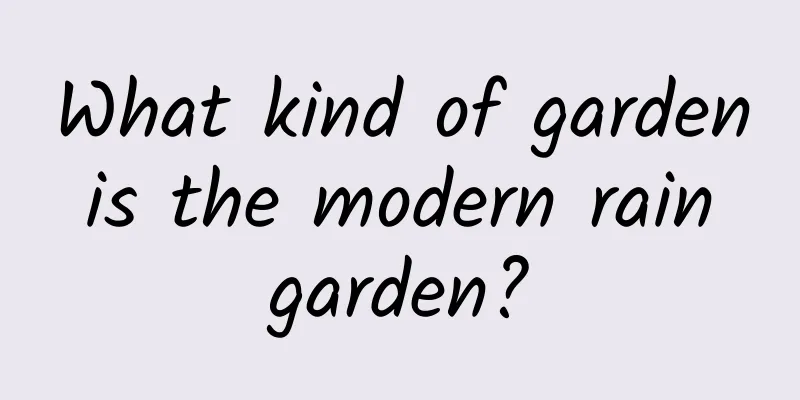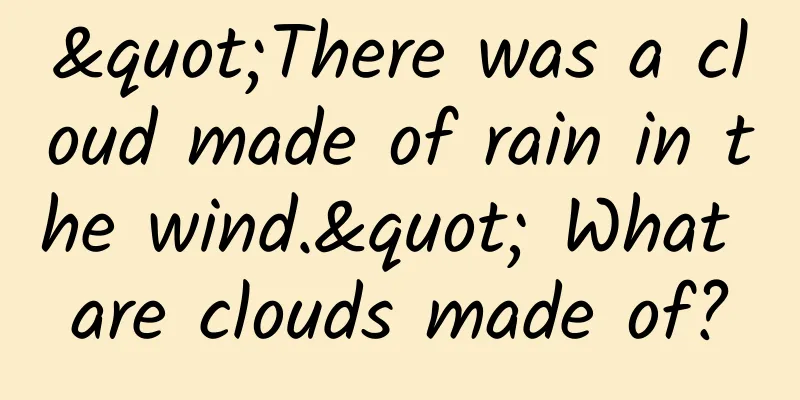What kind of garden is the modern rain garden?

|
Modern rain gardens were formed in the 1990s and originated in the United States. Larry Hoffman and his team proposed the idea of "bioretention pond" and coined the term "rain garden". They were then put into practice in Prince George's County, Maryland. Preface: With the acceleration of urbanization, more and more surface runoff and rainwater circulation problems have emerged, which has also caused water resource waste and urban ecological environment deterioration, such as urban waterlogging and biodiversity reduction. The promotion and construction of rain gardens will be one of the effective ways to solve this problem. In order to help the development and construction of modern cities, rain gardens must conduct a suitability evaluation and analysis of the site before planning, leaving enough above-ground or underground space for planning and construction. Secondly, rain gardens must have a suitable catchment area to accommodate a short-term surge in rainfall. Finally, rain gardens must not cause damage to site buildings and other infrastructure. Rain Garden Definition: Rainwater gardens use effective rainwater natural purification and treatment technology to collect rainwater. The collected rainwater is generally used to conserve groundwater, or to replenish landscape water or as domestic water. Rainwater gardens have significant effects on rainwater regulation and rainwater utilization. At the same time, rainwater gardens are also a kind of landscape green space with simple and extensive management, natural and beautiful, and both ecological and landscape quality. Rain Garden Construction 1. Aquifer: temporarily stores large amounts of rainwater and precipitates some harmful substances and metal molecules. 2. Covering layer: Use bark for covering, and create a microbial environment at the bark-soil interface that is conducive to the growth of microorganisms and the degradation of organic matter, so as to reduce the erosion of runoff rainwater. 3. Vegetation and planting soil layer: It has good filtering and adsorption effects. Generally, sandy soil with a large permeability coefficient is selected, and the plants planted should be perennials that can withstand waterlogging for a short period of time, such as daylilies and sedum. 4. Artificial filler layer: Natural or artificial materials with strong permeability are mostly selected. When sandy soil is selected, its composition is consistent with the planting soil layer. 5. Gravel layer: A layer of geotextile is usually laid between the filler layer and the gravel layer to prevent soil and other particles from entering the gravel layer and preventing soil particles from clogging the perforated pipe. Methods for zoning plants in rain gardens (based on different flooding conditions in the planting areas): 1. Water storage area Flood tolerance: The plant species in this area have the highest requirements for flood tolerance and must be able to withstand flooding for a long time without being affected. Drought tolerance: Although the water storage area is severely flooded during the rainy season, plants should also have a certain degree of drought tolerance to survive in dry conditions during the non-rainy season. Anti-pollution and purification capabilities: Plants also need to have strong anti-pollution and purification capabilities to effectively remove pollutants from rainwater. 2. Buffer Flood tolerance: Plants need to have certain flood tolerance characteristics to adapt to occasional flooding environments. Drought tolerance: In the non-rainy season, plants need to have strong drought tolerance to maintain normal growth. Resistance to rain erosion: Since the buffer zone may be affected by rain erosion, the plants must also have a certain ability to resist rain erosion. 3. Marginal Area Drought tolerance: Plant species in this area need to have strong drought tolerance to adapt to the dry growing environment. Flood tolerance: There is no special requirement for the flood tolerance of plants, but it would be better if you can choose plants that are both drought-resistant and slightly flood-resistant. Ornamental value: The selection of plants must also consider the connection with the surrounding plant landscape and their ornamental value. Plant selection principles for rain gardens 1. Try to use native plants. If you must use exotic species, choose plant species that have been domesticated for a long time. Native plants can adapt to the environment more quickly, form landscapes quickly, and require less management. 2. Choose plants with complete root systems. The root system of a plant is an important part of the plant to absorb water and is also the guarantee of the plant's survival. The integrity of the root system allows the plant to take root in the new soil faster and thrive. 3. Use plants that are drought-resistant but can tolerate temporary waterlogging (no more than 48 hours). Such plants have strong adaptability to the environment and can better play their role. 4. Use more fragrant plants. Aromatic plants help attract insects such as bees and butterflies, creating a better landscape effect. The value of rain gardens Economic value: The application of rainwater gardens provides new water resources for urban construction, greatly reduces the cost of water consumption in urban construction, and creates more economic benefits for urban construction. In addition, rainwater gardens have a strong development prospect and will receive extensive attention from various fields as a new industry in the future. They will be of great help in alleviating government fiscal expenditures, promoting urban economic development, absorbing rural and urban employment, and narrowing the gap between urban and rural construction. Ecological value: The important role of rain gardens in ecological planning is irreplaceable. Rain gardens bring good news for the collection, purification and utilization of rainwater. The infiltrated rainwater replenishes groundwater resources, which can not only increase the groundwater level, prevent or delay ground subsidence, but also replenish the soil aquifer, accelerate soil infiltration, improve the ecological environment, and maintain a good ecological environment. In addition, rain gardens also have important ecological significance in regulating urban microclimate, increasing urban water surface, and increasing urban green space. Artistic value: Rainwater garden is a functional landscape with multiple functions and artistic value. Its design is based on artistic means, especially when collecting rainwater, which is processed to meet aesthetic characteristics. Through artistic creation, a successful rainwater garden landscape has high artistic value in terms of area, size, combination, rainwater collection, plant configuration and landscape element setting. The design of a rain garden must take into account multiple factors such as site morphology, climate, hydrology, geology, soil, vegetation, etc. The form and concept of the rain garden must be applied to actual projects, and collaboration and cooperation with professionals must be carried out to research and establish a rain garden application system suitable for local environmental conditions to provide a diverse natural environment for urban and surrounding residents. It must be carried out in multiple aspects, and must not only achieve the comprehensive collection and utilization of rainwater, but also be integrated with human behavior, landscape and art. |
<<: Among so many monkeys, who is "Wukong"?
>>: Eater, do you know what you are eating?
Recommend
Porsche Mission E may be equipped with a new battery pack
According to foreign media reports, Porsche showe...
3 tips to improve your product conversion effect!
We can actually use product conversion rate to me...
2400 points start to be fearful of highs but will not reduce positions
Sold 37,817 shares of Yili at 12.72-12.80 yuan, t...
A cluster outbreak occurred among bus crew members! Will there be a large-scale COVID-19 outbreak in Beijing?
From 15:00 on May 12 to 15:00 on May 13, Beijing ...
Examples of optimal materials for information flow advertising to help you improve your conversion rate!
We have selected and compiled some information fl...
Do you know Web3?
Part 01 What is Web3? Before we learn about Web3,...
How to increase your conversion rate by 3-5 times?
Assuming that all other conditions remain unchang...
A woman who knows how to appreciate in this way is the greatest temptation to men.
A woman who knows how to appreciate in this way i...
Yiwei Liu, "Corporate Growth Map: An Operational Guide for Sustainable Corporate Growth"
Liu Yiwei's "Enterprise Growth Map: An O...
After revenge, I was "revengeful", the unbearable "weight of eating raw seafood"
recently A man avenges his daughter's crab bi...
Where is the "food" for super-hard "nuclear" technology? Travel all over the mountains and rivers to add "uranium" to China!
▲Cover figure of "Scientific Chinese": ...
The "all-black snowfall forecast map" scared netizens! What is going on with this rare weather?
Recently, the "Henan weather forecast map is...
Talk about the methodology of user operation
In user operation , user operation is the way to ...
How to enter the Daily Specials Factory Store?
How to open a "Tiantian Factory" store ...









